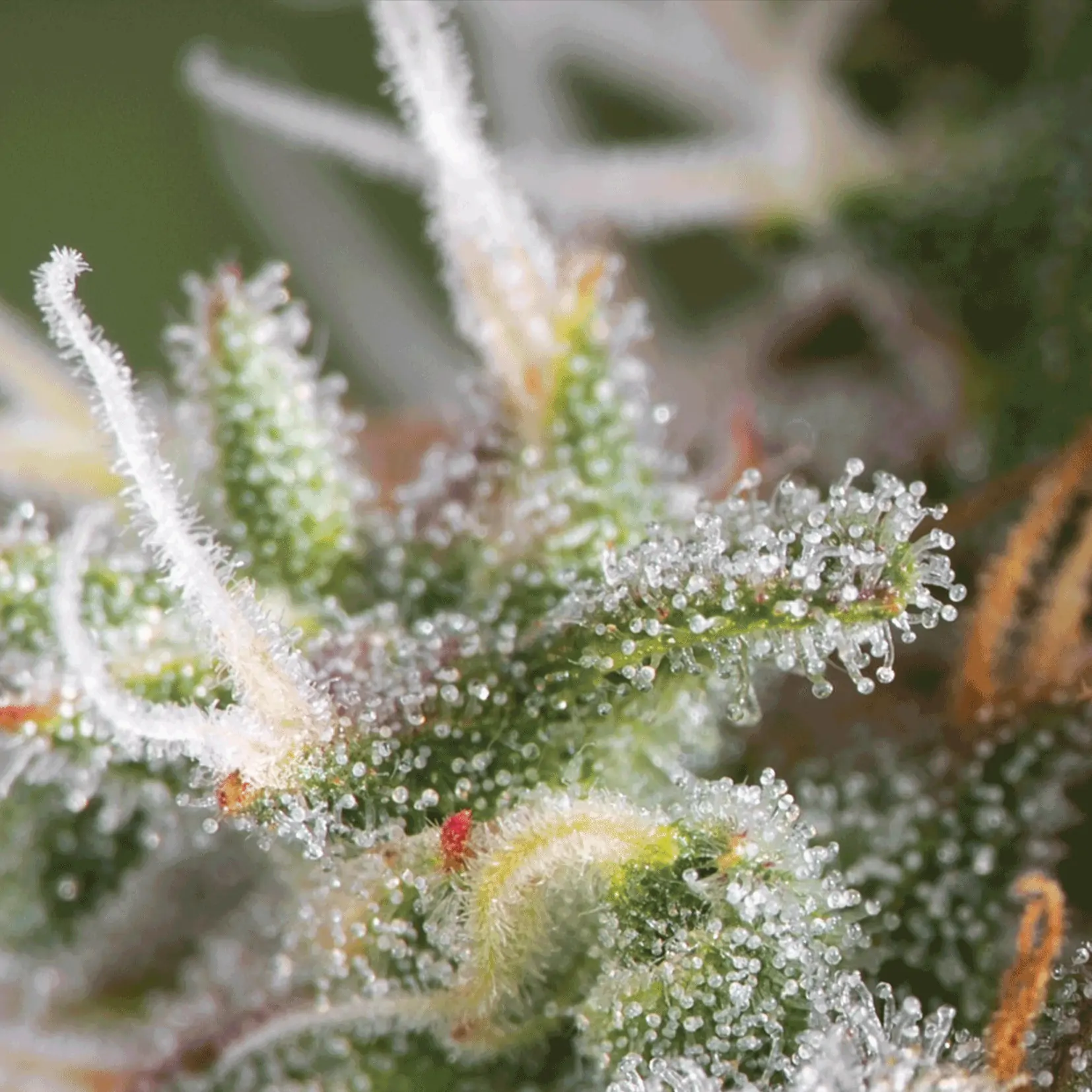The cannabinoids: THC & CBD
The formation of THC (tetrahydrocannabinol) and other cannabinoids in the trichomes of cannabis plants is a complex process that is not fully understood. However, it is known that the precursor to THC and other cannabinoids, cannabigerolic acid (CBGA), is produced in the cytoplasm of the epidermal cells that make up the trichomes. CBGA is then converted into other cannabinoid acids (such as THCA and CBDA) using specific enzymes. These cannabinoid acids are not psychoactive, but when exposed to heat or light through a process called decarboxylation, they lose their carboxyl group and become psychoactive cannabinoids. Remember that different cannabis varieties can have different concentrations of cannabinoids, and many believe this is the reason why cannabis plants can have different effects depending on the composition of cannabinoids. The effects and potential medical benefits of each of these compounds are still being investigated, and it will be exciting to follow new research results that can only make us more aware of the amazing properties cannabinoids have. To date, over 100 different cannabinoids have been found in the cannabis plant.
Overview of the most frequent cannabinoids
Here is an overview of the most frequent cannabinoids, their names, chemical compositions, and effects:
- Tetrahydrocannabinol (THC): The main psychoactive compound in cannabis that gives you the “high” feeling. It is made from CBGA through the decarboxylation process and has a chemical composition of C21H30O2. THC is the most widespread cannabinoid, and certain varieties of cannabis can contain up to 30% THC in the flowers. At Copenhagen Seed Company, varieties such as The Beast, Tropical Snow, and Copenhagen Kush are known to produce flowers with a THC content of 30% or more.
- Cannabidiol (CBD): A non-psychoactive compound known for its medicinal properties. It is made from CBGA through the decarboxylation process and has a chemical composition of C21H30O2. CBD is called a THC antagonist as it binds to the same receptors as THC and modifies the effect of THC.
- Cannabigerol (CBG): Another non-psychoactive compound known for its medicinal properties. It is made from CBGA through the decarboxylation process and has a chemical composition of C21H32O2.
- Cannabichromene (CBC): Another non-psychoactive compound known for its medicinal properties. It is made from CBGA through the decarboxylation process and has a chemical composition of C21H32O2.
- Cannabidivarin (CBDV): Another non-psychoactive compound known for its medicinal properties. It is made from CBDVA through the decarboxylation process and has a chemical composition of C19H26O2.
- Tetrahydrocannabivarin (THCV): Another non-psychoactive compound known for its medicinal properties. It is made from THCVA through the decarboxylation process and has a chemical composition of C19H26O2.
- Cannabicyclol (CBL): Another non-psychoactive compound known for its medicinal properties. It is made from CBDA through the process of decarboxylation and has a chemical composition of C22H28O2.
- Cannabielsoin (CBE): Another non-psychoactive compound known for its medicinal properties. It is made from CBDA through the decarboxylation process and has a chemical composition of C21H28O2.
- Cannabitriol (CBT): Another non-psychoactive compound known for its medicinal properties. It is made from CBDA through the decarboxylation process and has a chemical composition of C22H30O2.
Please note that this is not an exhaustive list, and many other cannabinoids exist. Furthermore, the specific composition and effects of cannabinoids can vary depending on the cannabis variety. Ongoing research continues to shed light on the potential benefits and properties of cannabinoids.

